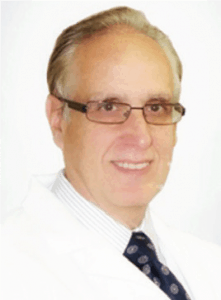We asked numerous Dental Sleep Practitioners across the US and Canada for their insight. These are their answers to the following questions “In Your Own Words”
- What device do you use most often in your practice?
- What appeals to you/your patients about this device?
- What is one tip you’d give to another clinician using this device for the first time?
 John Carollo, DMD
John Carollo, DMD
Florham Park, NJ
- Milled PMMA and 3D printed nylon devices, namely the ProSomnus [IA], [CA] [LP], Precision Herbst & IA Select, and Panthera D-SAD
- Light, thin, non-porous, less bacteria forming on the device, less bulk, and great patient compliance.
- Try each arch on the model first. If the fit is too tight on the model, adjust before trying in on the patient. Then, separately put one arch in at a time to adjust before putting both arches together.
Richard Drake, DDS
San Antonio, TX
 I’m a raving fan of several different devices, but if I must pick one for you today:
I’m a raving fan of several different devices, but if I must pick one for you today:
- Prosomnus Precision Herbst [PH]
- What I like about it, translating to what a patient might like:
b. Ability to add or subtract from lingual as necessary for retention
c. Can add an anterior opening
d. Option to add an anterior discluder
e. Comfort bumps for anterior part of the adjustment arm
- Can I give more than just one tip?
b. Ensure the midlines are where you want them on your bite. This is a BIG deal. We draw lines on the teeth (lower line on anteriors that matches to max midline)
c. Evaluate retention issues: very short, straight teeth, then you MUST cover lingual completely, for both arches
d. Evaluate nasal patency; if an issue with patient, then add an anterior opening
e. Evaluate sleep bruxism; if severe, then add an anterior discluder, keeping it as thin as possible, as low as possible, and make sure that it is long enough anterior to posterior to allow for maximum protrusion (otherwise you can advance too far, and then get “off” the discluder)
 Jay Neuhaus, DDS
Jay Neuhaus, DDS
New York, NY
- For Medicare patients, I love the SomnoDent Herbst Advance with soft liner. It’s reasonably priced and fits perfectly. I just started using the ProSomnus Precision Herbst [PH], which has a smaller footprint and also a perfect fit. I do wish it came with a soft liner to accommodate patients with lots of porcelain teeth. For non-Medicare, I love the ProSomnus MicrO2, as well as the Somnomed Avant,
- I’m a fan of both ProSomnus and SomnoMed as companies because their devices have precision fit and hardly ever require remakes. In particular, I love the measurement scale on the SomnoDent Herbst Advance. It makes it easy to see the amount of titration. Patients love them because of their low profiles and comfort.
- Take a very accurate standard-type impression or digital impression. I use a putty/wash combo for standard impressions, and Trios scanner for digital impressions.
 John Tucker, DMD
John Tucker, DMD
Erie, PA
- Herbst
- Herbsts are FDA-cleared and Medicare- approved appliances. It does not splint the mandible to the maxilla, providing full range of movement in lateral excursions and protrusive for the patient. This makes them TMJ friendly. They’re great for patients with parafunction. No hardware in the midline to inhibit the tongue from moving anteriorly to clear the airway. Low profile to maximize oral cavity volume. Extremely durable appliance.
- Make certain you have recorded any midline discrepancy when you take your protrusive bite registration. Honor any midline shift.
 Stacey Layman, DDS
Stacey Layman, DDS
Phoenix, AZ
- I use both the SomnoDent Herbst Advance and the SomnoDent Avant equally.
- The Herbst is nice because it’s low profile and the soft liner is very comfortable. The Avant is appealing because it’s low profile, it’s a metal-free option, and has a soft liner.
- The Herbst Advance and Avant are very simple and usually require no adjust Always advise patients that at first it will feel bulky and tight. Review the homecare instructions with them, set a timer for 5 minutes, and then reevaluate. They’ll usually acclimate to the device in that few minutes. Try not to adjust the fit unless absolutely necessary.
 Marc Newman, DDS
Marc Newman, DDS
Indianapolis, IN
- I try not to be a one trick pony, however, I’ve been stuck on nylon-12 devices whether it be hinge or dorsal designs. Lately I’ve been making more DDDO’s (Diamond Digital Dorsal Orthotic) and Panthera D-SAD devices.
- The appeal for me is the combination of thin design, durability, and ease of delivery. I also like how it’s CAD/CAM so there’s some play with design features to help accommodate for patient anatomy.
- My tip for first timers on any nylon-12 device is to talk to your local sales rep about the device and they’ll likely get you connected with a lab they have confidence in.
 Arthur Feigenbaum, DMD
Arthur Feigenbaum, DMD
Forest Hills, NY
- SomnoDent Avant
- The biggest appeal of the device is its comfort due to its minimal size and soft lining. Its innovative strap design allows tremendous flexibility making midlines unimportant while minimizing the effects of deviations and deflections. This makes adjustments very rare, minimizing chair time. A happy patient is a comfortable patient. A happy dentist is one with happy patients. Presently, it is the most comfortable appliance available.
- My advice for first time users would be to totally understand the strap design which differs from most others. Understand how the straps are changed and the advantages of using them.
 John Viviano, DDS
John Viviano, DDS
Ontario, Canada
- The device that is best suited to the patient’s presentation. Factors considered are condition and health of dentition and periodontium, retention capabilities of dentition, edentulous areas, size of arch and mouth, pre-existing TMD (range of motion issues), level and type of bruxism, existence of positional sleep apnea, manual dexterity of patient if contemplating home calibration, severity if looking for active advancement beyond what is available passively, and Medicare status if applicable. I always consider patient preference and like to offer two appliances so the patient has a choice whenever possible. If there is one BEST appliance, then I present that one and explain why.
- The fact that it is the appliance best suited to their particular needs!
- Spend time evaluating which appliance is best suited for your patient and it will save both you and the patient a lot of grief.





